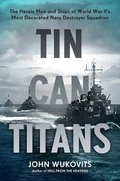4. Aftermath
What may be a sort of surprise is that the technology used in the design was by no means new. To characterize the concept, the following 3 features should be listed:
- streamlined hull
- snorchel
- huge battery capacity
The benefits of the streamlined hull had been known long before the era of Electroboats. In fact, the very first submarines including original Holland's vessel were more streamlined than their WW1 and WW2 successors. Schnorchel was developed in the 30's by the Dutch, but the concept was known to the others. Adding more battery capacity is just a matter of space, not technology.
Therefore, it should be noted that the technology used for Electroboats was actually available already in the 30's. Why it was not exploited? There was no need to do so as long as the U-boat was safer and performed better on the surface at night than under the surface. This was clearly demonstrated in the first few years of the U-boat War. Only when the relative safety of staying on the surface was taken away by radar and aircraft, the German Naval High Command started looking for an alternative solution.
The reason for the late introduction of Electroboats should be primarily related to the underestimation of radar technology. In this particular field the Germans were significantly behind England. Had the German radar technology been more advanced, it would have probably been realized that it was just a matter of time before the small silhouette of the surfaced U-boat was indeed big enough for the radar to be located. And then the Electroboats could have come earlier.
Also, outstanding was the production process of the Electroboats, particularly the larger one. It was one of the few examples of the implementation of mass-production principle by the German industry during the Second World War. Of course, this too was affected by the Allied bombing, but the final number of commissioned Electroboats should be regarded as high. It is again a kind of surprise that the mass-production concept was not adopted earlier, particularly for the conventional U-boat production. A high number of conventional U-boats in the second half 1941, when the British counter-measures were not fully developed yet, instead of 1942, certainly would have made a difference.
The experience of U-2511 clearly demonstrates the outstanding performance of the Type XXI and it is certain, that the Allied navies had no ready answer to the new threat. The operations of the Type XXIII constitute yet another proof of the fighting qualities of the Electroboats. Had the Allied progress on land been slower, the Type XXI U-boats might have appeared in numbers great enough to paralyze the Atlantic communication routes, even in spite of the increased bombing of production and training facilities.
Electro boat diary:
| November 1942 | the birth of the Electroboat idea |
| January 1943 | theoretical calculations finished |
| June 1943 | design completed |
| July 1943 | project approved |
| September 1943 | conventional U-boat building programme limited |
| November 1943 | orders placed |
| December 1943 | production design completed |
| 30 April 1944 | first Type XXIII launched (U-2321) |
| 12 May 1944 | first Type XXI launched (U-2501) |
| 12 June 1944 | first Type XXIII commissioned (U-2321) |
| 27 June 1944 | first Type XXI commissioned (U-2501) |
| August 1944 | first aerial mines in the Bay of Danzig |
| 29 January 1945 | first Type XXIII sailed on war patrol (U-2324) |
| February 1945 | testing and training transferred to the Bay of Luebeck |
| 14 February 1945 | first success by an Electroboat (U-2322) |
| 30 April 1945 | first Type XXI sailed on war patrol (U-2511) |
| 7 May 1945 | last success of an Electroboat and in the war (U-2336) |



